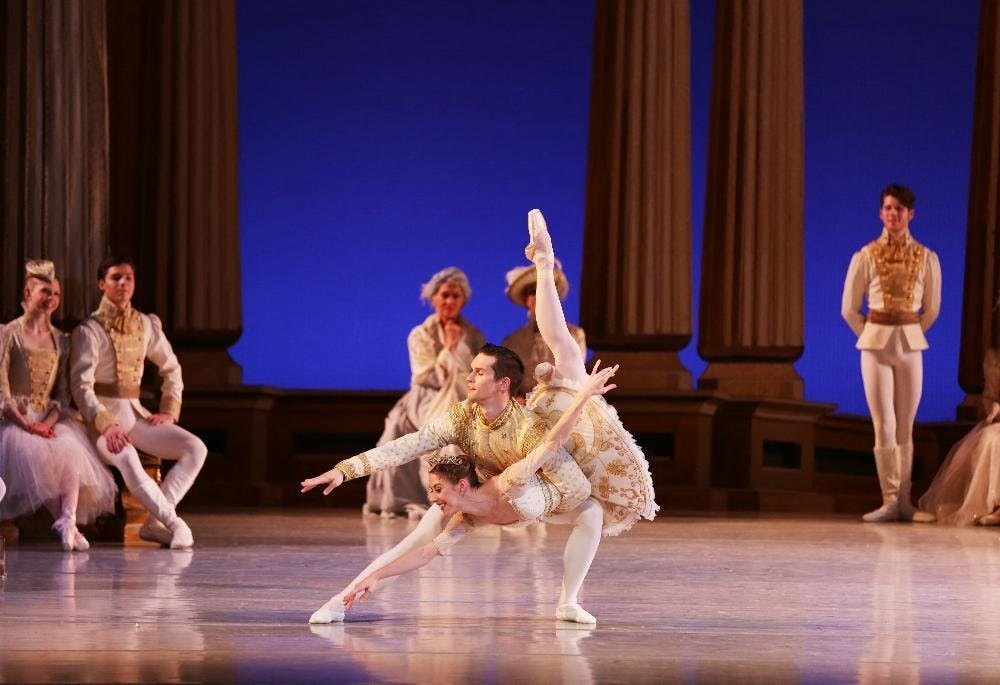The Richmond Ballet is now hosting one of the great evening-length ballets, Tchaikovsky’s “The Sleeping Beauty.” The work easily figures as one of the composer's most characteristic achievements, a prismatic spectacle of seamless, long-spun melody.
Even today, more than 125 years after this ballet’s premiere in 1890, its music never fails to enthrall, and even to astonish. The Lilac Fairy may weave her magic onstage, but it’s Tchaikovsky’s music that casts the real spell. She managed to sedate a princess for a century. He’s kept his listeners in a veritable trance for a century-and-a-quarter and counting.
This is the ballet in which the composer comes of age, the central panel in his dance triptych. With all three of Tchaikovsky's works pillars of the repertory, strangely, not one of them is especially like the others.
“Swan Lake,” Tchaikovsky's first, was the big experiment, with an exceptionally dramatic premise: a dark, Nordic fairy tale with a pair of doomed lovers whose passion approaches that of Tristan and Isolde.
In “The Sleeping Beauty,” Tchaikovsky abandons tragic symbolism, opting instead for plot elaboration.
Princess Aurora (Cody Beaton) is little more than a girl – 16, to be exact – and she has a rather unusual predicament. Unlike most heroines, Princess Aurora is comatose. With her whole asleep-for-a-hundred-years bit, she must have 80 years on the prince (Marty Davis).
He’s not exactly complex, either. Just good old-fashioned, straight-up chivalry. He wakes her with a kiss; they throw a lavish bridal bash, its guest list comprising Perrault’s usual suspects; story over.
Although the lovers in “Swan Lake” are made palpably human by their suffering, these two feel more like types – mythic tropes, vaguely drawn. Tchaikovsky’s genius is in his ability to flesh them out through music. He perceives a depth and drama in this charming children’s story that its plot outline barely suggests.
In the Richmond Ballet’s version, the Lilac Fairy (Lauren Archer), normally the sole narrator, shares the role with Puss ’n Boots (Khaiyom Khojaev).
The cat reappeared on several occasions throughout the evening. Indeed, he seemed a symbol of the production’s lightweight affect, where the story’s more harrowing elements were subordinated to charm and humor.
Even the evil fairy, Carabosse (Elena Bello), expresses her malevolence more through smiling schadenfreude than through actual ill-temper.
I’m not a dance critic, which is a shame: These dancers, from the principals through the trainees and right on down to the young students, deserve the attentions of a critic qualified to assess their artistry in more than the general terms.
Enjoy what you're reading?
Signup for our newsletter
The student dancers may, understandably, lack the professionals’ awesome technical accomplishment. But their basic seriousness is never in question. And it is to the Richmond Ballet’s credit that the three groups — professional, trainee and student — are so beautifully and consistently integrated.
With Anne Armit and Shannon Lovelace’s refulgent costume design, the costumes for the birthday scene could hardly be improved upon. The men were dashing in their 18th-century breeches and livery, with tricorns jauntily topping off their hijinks.
It was refreshing throughout to find the male dancers an autonomous, masculine presence, more than just consorts for their female companions, in a ballet that can easily seem hyper-estrogenic. The women were similarly enchanting: a vision of French-provincial joie de vivre, in their peasant bodices and floral trappings.
I would be remiss if I didn’t note the game contributions of Cody Beaton and Marty Davis in the lead roles, her insouciance counterweighted nicely by his gravitas. To enliven these two protagonists is a challenge, as they have none of the proto-Freudian nervousness of temperament that humanizes their corollaries in “Swan Lake” and “The Nutcracker.” Beaton and Davis ennoble them just the same.
Their final act pas de deux may be my favorite moment in the ballet. Its Adagio–Andante non troppo ranks among the most poignant musical pages in all of Tchaikovsky. This was, appropriately, a high-water mark for Beaton and Davis.
More than a century after the premiere, we continue to laugh at the foibles of fairies and courtiers, to shiver in horror at Carabosse’s malignancy. We still gape in wonder at the Lilac Fairy’s provision and, finally, weep with joy at a simple kiss.
This review is based on the Friday, February 9 performance. A Saturday matinee had an alternate cast.
Contact contributor Dane Harrison at dane.harrison@richmond.edu.
Support independent student media
You can make a tax-deductible donation by clicking the button below, which takes you to our secure PayPal account. The page is set up to receive contributions in whatever amount you designate. We look forward to using the money we raise to further our mission of providing honest and accurate information to students, faculty, staff, alumni and others in the general public.
Donate Now



